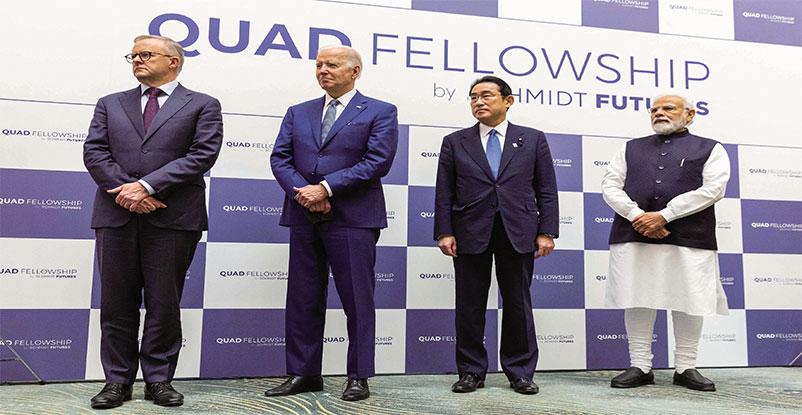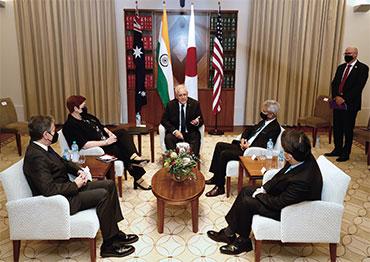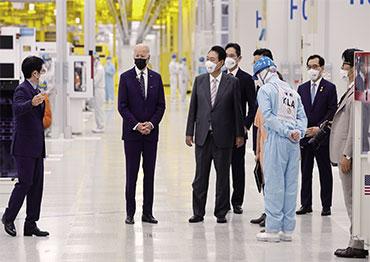According to Xu Liping, a senior research fellow at the Chinese Academy of Social Sciences (CASS), the economic and trade relationships between China and regional countries, especially ASEAN countries, are resilient and can withstand the impact of the IPEF.
In November 2020, China and all ASEAN countries, along with Japan, South Korea, Australia and New Zealand, signed the Regional Comprehensive Economic Partnership (RCEP), the world’s largest trade deal. On January 1, 2022, the RCEP went into force in 10 of its 15 member states, including China and six ASEAN countries.
Trade between China and ASEAN countries reached US$878.2 billion in 2021, a 28.1 percent jump from the previous year, making the bloc China’s top trade partner, replacing the European Union. As tariffs on 90 percent of all goods will drop to zero under the RCEP, trade between China and regional countries is set to grow in the coming years. “If the US aims to use the RCEP to open a crack in the China-ASEAN relationship, it will most likely fail,” Xu said.
Some participating countries have already voiced reluctance over the IPEF. On May 11, speaking ahead of the US-ASEAN summit held from May 12-13 in Washington, Vietnam’s Prime Minister Pham Minh Chinh said his country was ready to engage with the US, but needed more time to study the initiative as it lacks clarification.
Malaysia’s Prime Minister Ismail Sabri Yaakob was more direct. Speaking during the same summit on May 13, he said that Kuala Lumpur has not decided which of the IPEF’s pillars it would join and called for the US to adopt a “more active trade and investment agenda.”
In an ironic twist, Ismail instead urged the 6,200 US companies operating in ASEAN to take advantage of the RCEP. “I would encourage US businesses to tap into the largest FTA, with a market covering 15 countries, comprising 2.3 billion, or nearly a third of the global population and world GDP, and take advantage of the vast investment opportunities presented,” he said.
Many regional experts are not optimistic. In a co-authored commentary published by Singapore-based Channel News Asia (CNA) on June 3, experts from the Southeast Asia-focused ISEAS-Yusof Ishak Institute in Singapore – Jayant Menon, Tham Siew Yean and Maria Monica Wihardja – questioned the framework’s future.
“The fact that only 13 other countries [besides the US] from such a vast region have indicated interest is not a promising start – there is only one Pacific Island nation and one from South Asia,” the article said. The researchers warned that as participating countries are only committed to an initial round of discussions and may be required to make painful policy changes under IPEF rules, it is unclear whether the negotiations will lead to binding commitments. “There is a good chance that it may not actually amount to anything significant,” the article concluded.
In an article published by ASEAN Briefing on May 19, the paper’s Jakarta-based editor Ayman Falak said the IPEF is framed around issues that matter most to the US and does not respond to the urgent issues of ASEAN states.
Calling the IPEF a part of “a wider ‘America First’ policy that has been continued by the Biden administration,” he said the IPEF is “an unimpressive attempt by Washington to make up for its unwillingness to negotiate the type of open market access trade deals ASEAN countries are seeking.”
The harshest criticism of the IPEF came from China. One day ahead of Biden’s launch of the IPEF on May 22, Chinese Foreign Minister Wang Yi lambasted the IPEF, questioning the US’ attempt of “deliberately creating economic decoupling, technological blockades, industrial chain breakage and aggravating the supply chain crisis.”
Stressing that the Asia-Pacific region should become “the pacesetter for peace and development, not the arena of geopolitics,” Wang declared that with China’s large market and population of 1.4 billion, “all kinds of conspiracies that attempt to create camp politics, build an Asia-Pacific version of NATO and wage a new Cold War in the Asia-Pacific region are doomed to fail.”
“The one trying to use a framework to isolate China will eventually isolate itself,” Wang said.

 Old Version
Old Version


